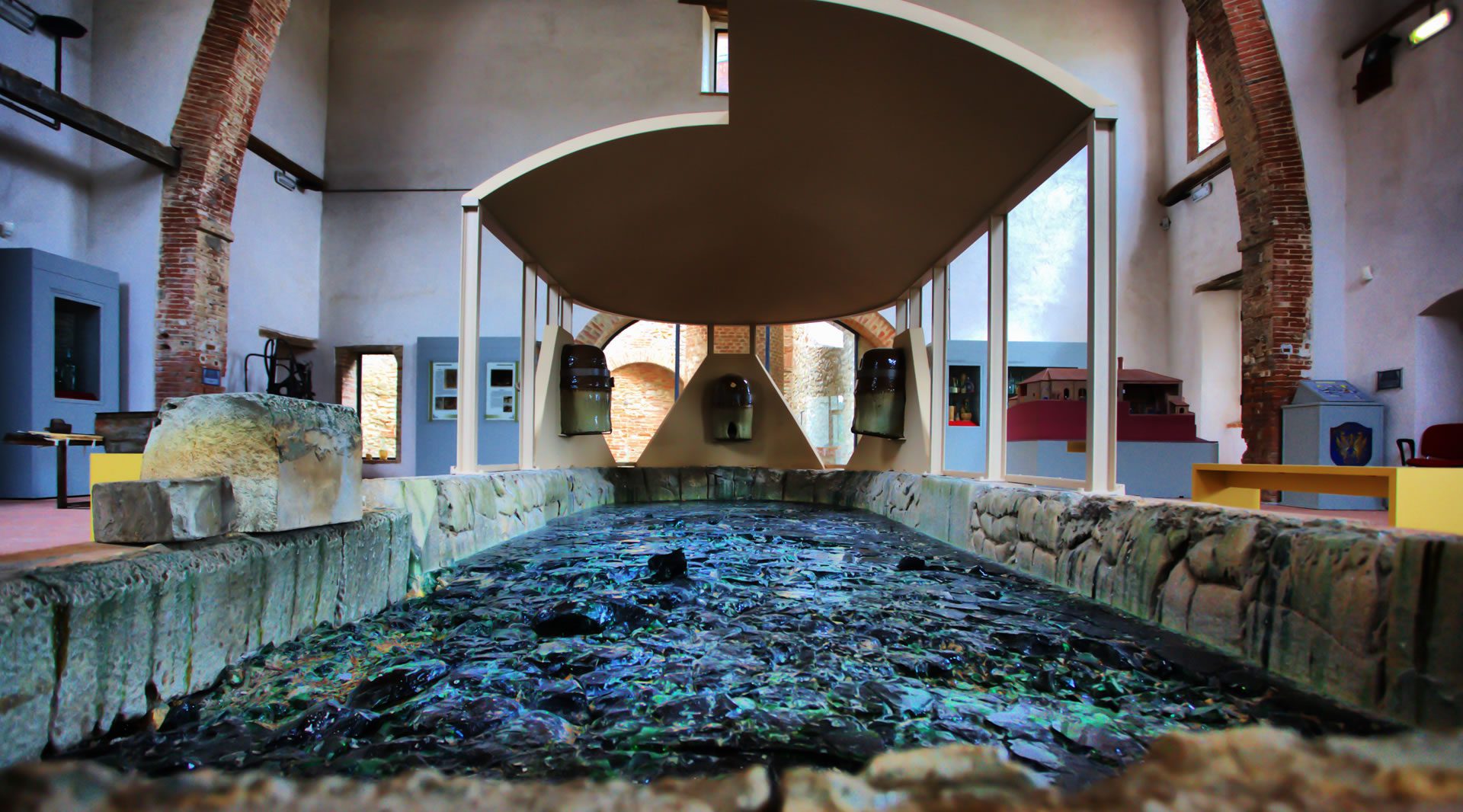In the small village of Piegaro there is the Glass Museum, a fascinating example of industrial archeology and an important testimony of one of the most historically widespread activities in the area.
Piegaro is part of the mountain community of the Monti del Lago Trasimeno, as it rises in the southern area of the lake, among the hill ranges that surround the Nestore river. In the areas adjacent to the banks of the Trasimeno, the main activity has always been fishing, while glass processing and production have characterized Piegaro and its economy for centuries, starting from the thirteenth century.
Since the 13th century, the centennial history of glass and of its workers has been closely linked with the development of the village and its territory.
THE MUSEUM AND THE ART OF GLASS IN PIEGARO
The Piegaro Glass Museum is located right in the old glass factory, while in the square in front of it a furnace has recently been installed for glass craftsmanship.
The building that houses the museum is located within the historic center of the village and is easily recognizable even from a distance due to the perfectly preserved old chimney that stands above the surrounding buildings.
The factory was the last site of the glassworks itself, which was abandoned in 1968. Until the 1950s, the processing was completely manual and took place through “blowing”. From the blow pipe, through which the so-called “bolo” of glass was taken, we proceeded with tools and molds to model any type of artifact. Semi-automatic machines were introduced only at a later time and allowed blowing into pre-arranged molds, using a compressed air system.
WHAT TO SEE AT THE PIEGARO GLASS MUSEUM
The museum itinerary is divided into three floors between artifacts, period machinery and rooms once used for the various stages of glass processing.
The Hall of Vaults
It is the oldest part of the building and is characterized by the suggestive cross vaults, blackened by the smoke deriving from the ancient structure.
The Oven Room
Here the glass processing took place, the heart of the production process. The high ceiling was necessary to circulate the air inside the room, which reached very high temperatures due to the proximity of the melting furnace. The base of the perimeter wall remains of the oven, with part of the last glass left inside when it was finally shut down in 1968.
The structure of the furnace was closed by a low iron vault, with openings for the removal of the glass, and heated with a system of tunnels that ran below. A small window in the floor allows you to observe the opening through which the glass was dropped for the last time, with a waterfall that flows into a majestic flow towards the floor below.
Oven Heating System
The tunnel system for heating the melting furnace allowed hot air to circulate from the burner to the floor of the furnace. The brazier is still visible along the stairs that go down to the basement.
Warehouses and Casting
Most of the basement was used as a warehouse. In these spaces, with a low and massive structure, both raw materials and finished products were kept. Thanks to the opening that opens onto the containment chamber, in which the glass was usually collected when the kiln was shut down, it is possible to admire the fascinating emerald green flow made into it without being removed.
PRACTICAL INFORMATION FOR VISITING THE GLASS MUSEUM
The Glass Museum is located in via Garibaldi 20, within the village of Piegaro. It was inaugurated in 2009 and since then can be visited all year round with the following opening hours:
In the months from April to September
From Tuesday to Sunday: 10:00 – 13:00 and 15:00 – 18:00
Monday open by reservation only
Closed on May 1st and August 15th
In the months from October to March
Friday, Saturday and Sunday: 10:00 – 13:00 and 15:00 – 18:00
Monday, Tuesday, Wednesday and Thursday open by reservation only
Closed 24-25 December and 1 January
The ticket for the Glass Museum is € 4.00 and there are reductions for groups (€ 3.50 for groups of at least 25 people), children and teenagers aged 6 to 14 (€ 2.50) and school groups. Children up to 6 years and disabled enter for free.
Inside the Museum it is also possible to take advantage of guided tours and a whole series of creative workshops, particularly dedicated to schools, summer camps, groups of children and families: educational workshops of artistic stained glass, mosaic, glass fusing, clay and glass, young cartographers , the typical day of the worker, drawing and painting in the streets of the village etc.
If you want to live a unique experience and try your hand at the art of glass, we recommend the laboratories of Sistema Museo in collaboration with the Museum.
With the workshop “L’Antica Arte dei Vetrai in Pie


Comment (0)